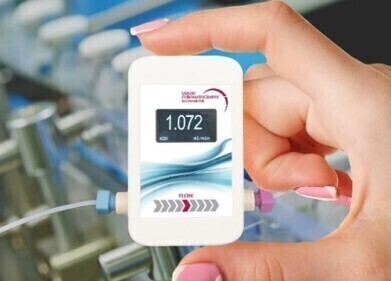HPLC, UHPLC
What’s Swimming in Your Pool? Taking a Dip with Chromatography
Dec 05 2014
Swimming at the local pool is a pastime enjoyed by young and old. And if you like swimming too, you’ll probably accidently have gulped down a mouth full of water at some point. instead of air. Yuck! But have you thought about what’s in the water? A recently published study has used chromatography to take a look at what lurks in the pool.
Pharmaceuticals and Personal Care Products
Weng et al looked at pharmaceuticals and personal care products (PPCPs) in swimming pools. Reporting in Environmental Science and Technology Letters, they considered the likely routes of PPCPs into pools and also what might happen to them once in the water.
A wide range of chemicals can be found in pools due to the discharge of human waste — urine. The use of creams and lotions on the body is another route for chemicals to enter the water.
The chemicals that the team concentrated on were those commonly used in PPCPs — ones that have been previously found in other studies on wastewater or drinking water. Drugs such as ibuprofen, naproxen and N,N-dimethyl-m-toluamide (known as DEET, the insect repellent) were among those that the team searched for. They also carried out reactions looking at how quickly the chlorine in the water broke the chemicals down.
Chromatography helps out
The team used LC/MS/MS to analyse the samples taken from the swimming pools. LC/MS/MS is a powerful analytical technique — it uses high-performance liquid chromatography (HPLC) to separate individual molecules from a complex sample matrix, then deliver them to a detector.
In this instance, the team used tandem mass spectroscopy (MS/MS) to analyse the samples after they had been separated. Tandem mass spectrometers can be used to provide structural information about molecules — so when used with chromatography they provide a tool to identify molecular components in a sample. LC/MS/MS is a crucial tool in clinical research. For more information on the advantages of this technique, read: Direct Analysis of Urinary Opioids and Metabolites by Mixed-mode µElution SPE Combined with UPLC/MS/MS for Clinical Research
Another part of the research looked at the rate that molecules would degrade in a swimming pool. One of the components in swimming pools is chlorine — used to keep the water free of bacteria and algae. Chlorine is used because it is a reactive chemical species, and so is likely to react with any molecules in the water. The researchers used HPLC to analyse the reaction rate of various chemicals with chlorine.
What’s in the water?
The main chemical found in the swimming pool samples was DEET, with small amounts of caffeine also found in some samples. The researchers suggest that there is a possibility for some chemicals to accumulate in pools — specifically those that react slowly with chlorine and those that are less volatile and are unlikely to evaporate away.
The study highlights that hygiene amongst swimmers and showering before entering the pool are important factors in keeping the water clean. So — don’t pee in the pool!
Image Source: Swimming
Digital Edition
Chromatography Today - Buyers' Guide 2022
October 2023
In This Edition Modern & Practical Applications - Accelerating ADC Development with Mass Spectrometry - Implementing High-Resolution Ion Mobility into Peptide Mapping Workflows Chromatogr...
View all digital editions
Events
Jan 20 2025 Amsterdam, Netherlands
Feb 03 2025 Dubai, UAE
Feb 05 2025 Guangzhou, China
Mar 01 2025 Boston, MA, USA
Mar 04 2025 Berlin, Germany



.jpg)








